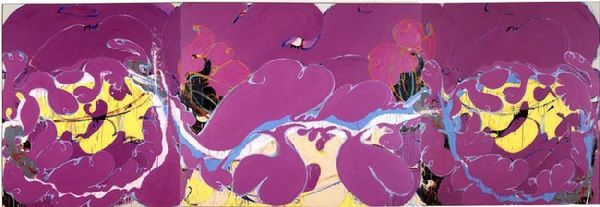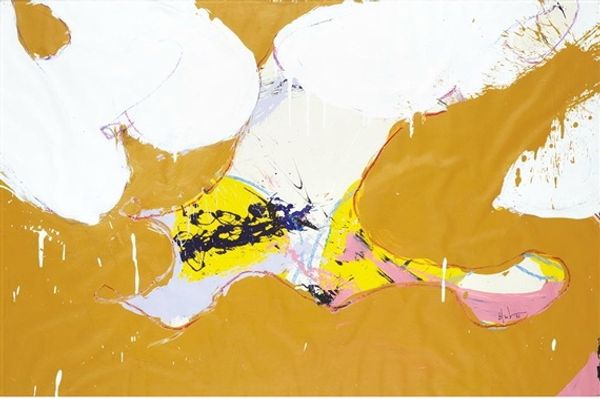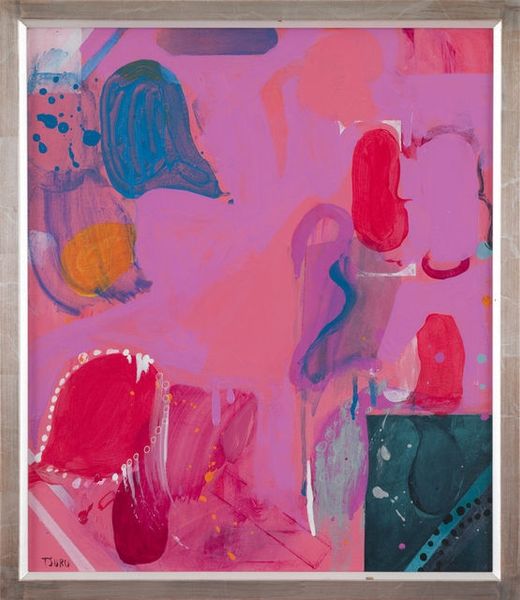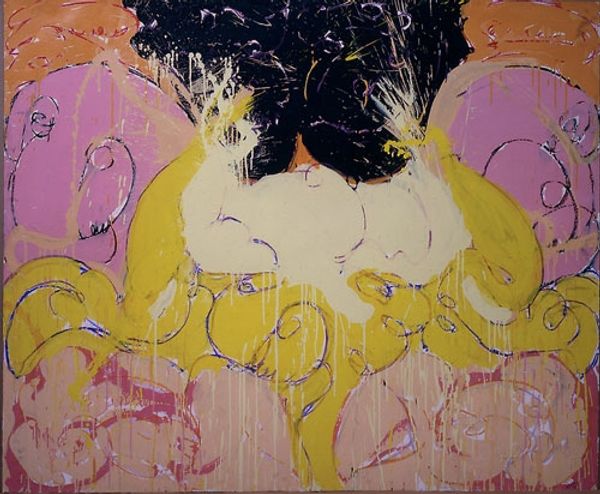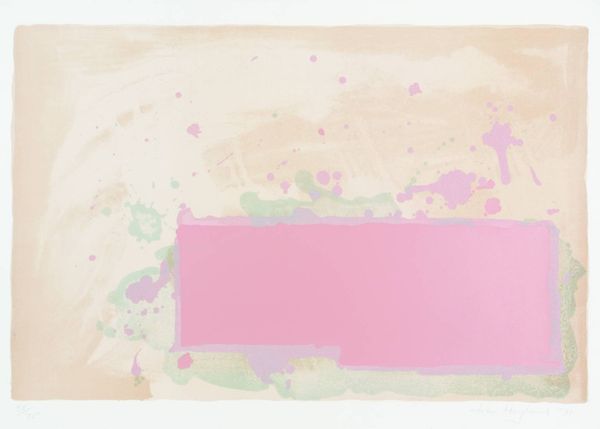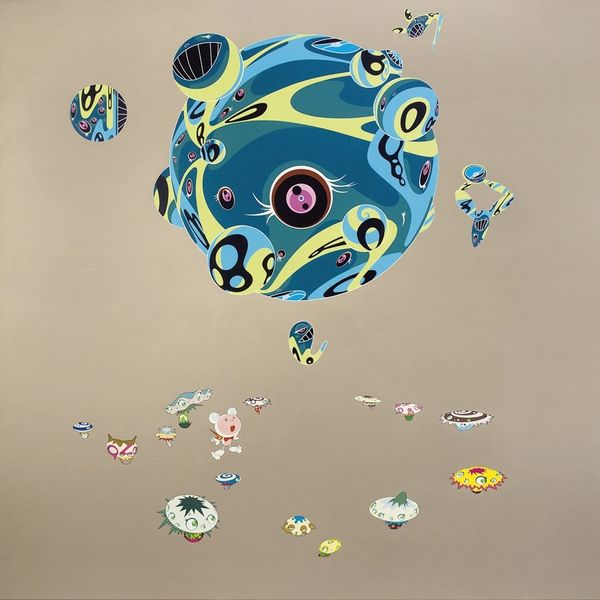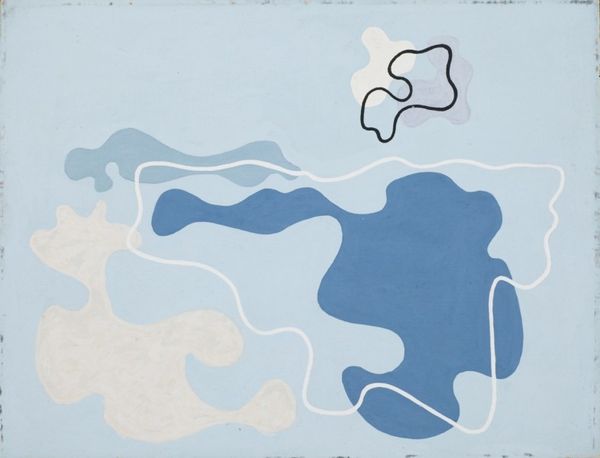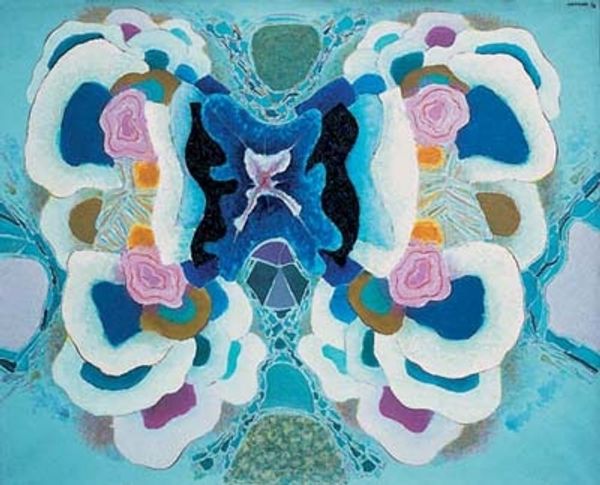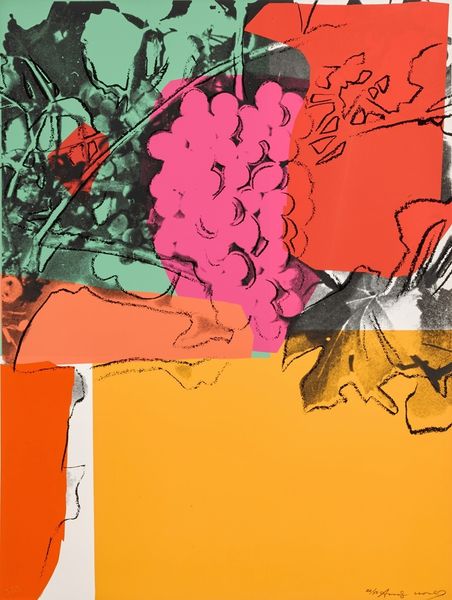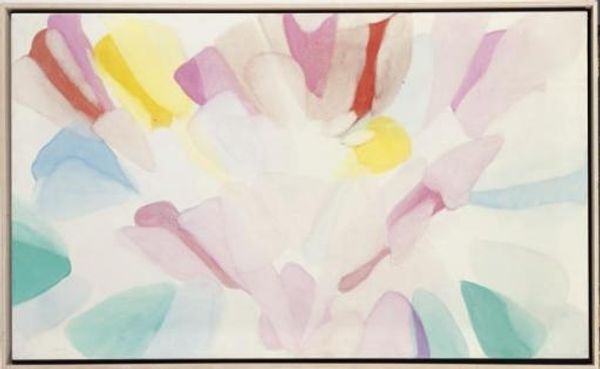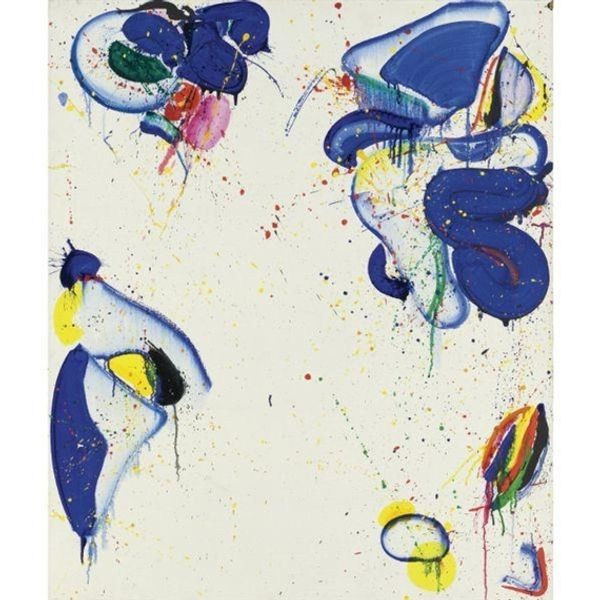
Copyright: Norman Bluhm,Fair Use
Curator: Here we have Norman Bluhm’s “Pygmalion,” executed in acrylic paint in 1979. Editor: Immediately, I’m struck by the almost saccharine pastel palette. It’s playful, but with a definite tension in those swirling dark accents. Curator: Indeed. The canvas is organized into three distinct sections, each with a vaguely ovoid shape dominating the composition. Consider the interplay between the saturated yellows and purples against the predominantly creamy background. Do you observe a structural dialogue unfolding? Editor: I do, and I wonder if Bluhm is alluding to the story of Pygmalion, the sculptor who falls in love with his own creation. The multiple panels, the creation of images as such—is it reflecting how society and artistic representation transform people into images, or just celebrating the story’s emotional drama? Curator: That's a valuable entry point. By 1979, Bluhm was deeply immersed in abstract expressionism, exploring automatism and a very dynamic approach to composition. Note the gestural strokes and layered applications of color; are we perhaps witnessing the artist's subconscious taking tangible form? Is he using an established story to work out this interest? Editor: Perhaps both the artist's creative subconscious *and* a commentary on the societal gaze, as revealed through media. It makes one reflect on what inspires such expressive work – historical narrative or present circumstance. And if that affects the success of what seems at first to be primarily aesthetic or emotional choices? Curator: A compelling paradox! Editor: Agreed, the beauty is that Bluhm gives no simple answers, really, leaving each of us with lingering questions regarding what art means on a societal or personal level.
Comments
No comments
Be the first to comment and join the conversation on the ultimate creative platform.
